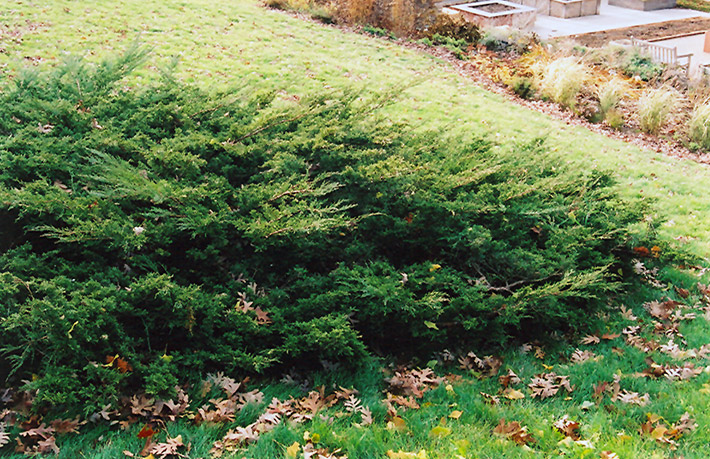Koster's Redcedar
Juniperus virginiana 'Kosteri'
Height: 4 feet
Spread: 9 feet
Sunlight:
![]()
Hardiness Zone: 4a
Description:
A choice massing or groundcover evergreen shrub, with dusty blue fine-textured foliage and a spreading, arching habit of growth, very adaptable but needs full sun; makes a fine large groundcover for difficult locations
Ornamental Features
Koster's Redcedar is primarily grown for its highly ornamental fruit. It features an abundance of magnificent silvery blue berries from late spring to late winter. It has attractive grayish green evergreen foliage. The scale-like sprays of foliage are highly ornamental and turn plum purple in the fall, which persists throughout the winter.
Landscape Attributes
Koster's Redcedar is a dense multi-stemmed evergreen shrub with a ground-hugging habit of growth. It lends an extremely fine and delicate texture to the landscape composition which can make it a great accent feature on this basis alone.
This shrub will require occasional maintenance and upkeep, and is best pruned in late winter once the threat of extreme cold has passed. Deer don't particularly care for this plant and will usually leave it alone in favor of tastier treats. Gardeners should be aware of the following characteristic(s) that may warrant special consideration;
- Disease
Koster's Redcedar is recommended for the following landscape applications;
- Mass Planting
- General Garden Use
- Groundcover
Planting & Growing
Koster's Redcedar will grow to be about 4 feet tall at maturity, with a spread of 9 feet. It tends to fill out right to the ground and therefore doesn't necessarily require facer plants in front. It grows at a medium rate, and under ideal conditions can be expected to live for 70 years or more.
This shrub should only be grown in full sunlight. It is very adaptable to both dry and moist growing conditions, but will not tolerate any standing water. It is considered to be drought-tolerant, and thus makes an ideal choice for xeriscaping or the moisture-conserving landscape. It is not particular as to soil type or pH. It is highly tolerant of urban pollution and will even thrive in inner city environments. This is a selection of a native North American species.

